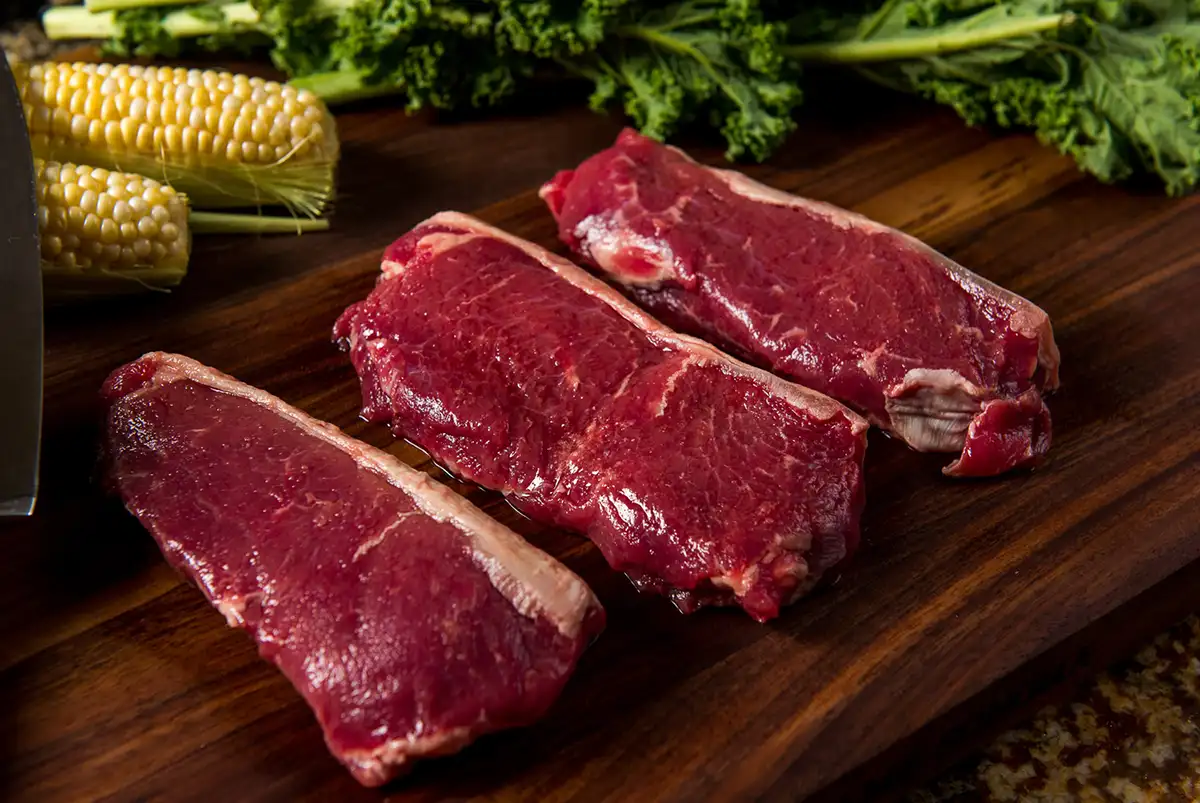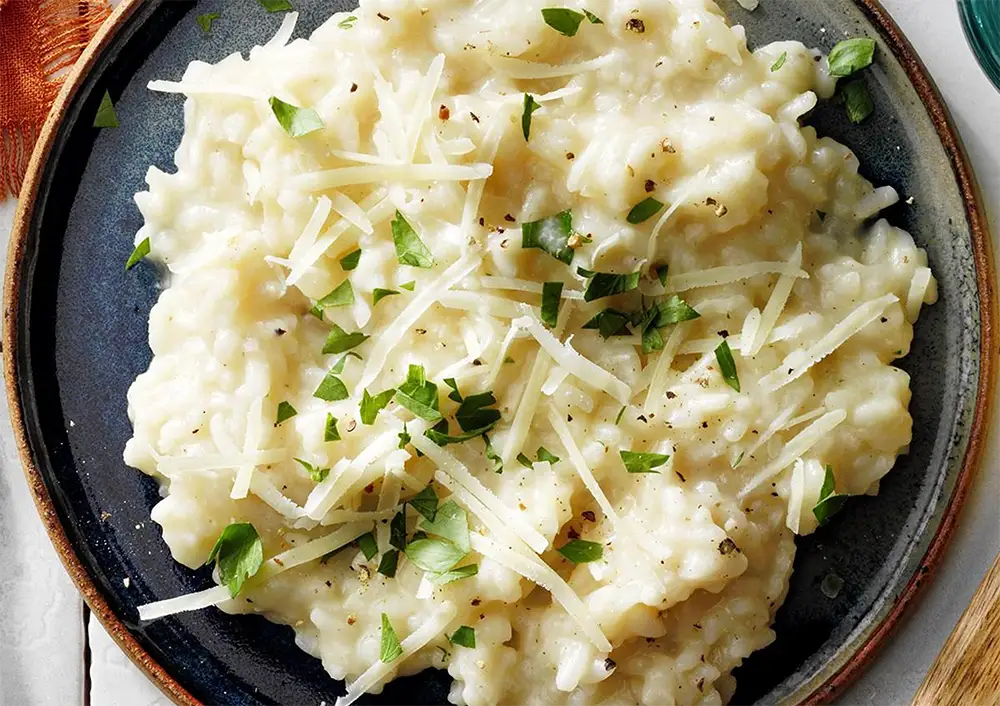Grass-fed Beef
Grass-fed beef cooks faster than grain-fed beef and is ideal at rare to medium-rare temperatures.
Did you Know?
The word beef is from the Latin bōs in contrast to cow which is from Middle English cou.
This is one example of the common English dichotomy between the words for animals (from largely Germanic origins) and their meat (from Romanic origins) that we also see in word-pairs like pig/pork, deer/venison, sheep/mutton and chicken/poultry.
The reason for this split is that, after the Norman Conquest of Britain, the French-speaking nobles who ruled naturally used French words to refer to the meats they were served. And the peasants who did the actual work of raising the animals used various Anglo-Saxon words for those animals. Which is why we eat beef from cows.
The rarely used plural form of beef is beeves.

Grass-fed beef steaks
A Little History
People have eaten the flesh of bovines from prehistoric times; some of the earliest known cave paintings show aurochs in hunting scenes. People domesticated cattle to provide ready access to beef, milk, and leather. Most cattle originated in the Old World, with the exception of bison hybrids, which originated in the Americas. Examples of Old World beef include the Wagyū from Japan, Ankole-Watusi from Egypt, and longhorn Zebu from the Indian subcontinent.
In the United States, the growth of the beef business was largely due to expansion in the Southwest. Upon the acquisition of grasslands through the Mexican–American War of 1848, and later the expulsion of the Plains Indians from this region and the Midwest, the American livestock industry began, starting primarily with the taming of wild longhorn cattle.
Beef Recipes
The Perfect Roast Beef with Yorkshire Puddings or Popovers
Beef Roulade with Walnut and Parsley Pesto
Tips for Cooking Grass Fed Beef
Grass-fed beef cooks faster than grain-fed beef. Grass-fed beef is ideal at rare to medium-rare temperatures. If you prefer meat well done, cook at a low temperature in a sauce to add moisture. A slow cooker is ideal.
- Because grass-fed beef is low in fat, coat it with extra virgin olive oil or another light oil to help prevent the meat from drying out and sticking to the cooking surface.
- Never use a microwave to thaw grass-fed beef. Either thaw in the refrigerator or, for quick thawing, place the vacuum sealed package in cold water for a few minutes. Let it sit at room temperature for no more than 30 minutes. Don’t cook it cold straight from the refrigerator.
- Tenderizing breaks down tough connective tissue, so use a mechanical tenderizer like the Jaccard. It’s a small, hand-held device with little “needles” that pierce the meat and allow the marinade or rub to penetrate the surface.
- Another way to tenderize is to coat a thawed steak with your favorite rub; put it into a plastic zipper bag; place on a solid surface; and, using a meat mallet, rolling pin, or other hard object; pound a few times. This will not only tenderize the meat, but will also incorporate the rub, adding flavor. Don’t go overboard and flatten the beef unless the recipe calls for it.
- Always pre-heat the oven, pan, or grill before cooking grass-fed beef.
- Grass-fed beef cooks about 30 percent faster than grain fed beef. Use a thermometer to test for doneness and watch the temperature carefully. You can go from perfectly cooked to overdone in less than a minute. The meat will continue to cook after you remove it from the heat, so when it reaches a temperature ten degrees LOWER than the desired temperature, it’s done.
- Let the beef sit covered in a warm place for eight to 10 minutes after removing from heat to let the juices redistribute.
- Pan searing on the stove is an easy way to cook a grass-fed steak. After you’ve seared the steak over high heat, turn the heat to low and add butter and garlic to the pan to finish cooking.
- When grilling, quickly sear the meat over high heat on each side and then reduce the heat to medium or low to finish. Baste to add moisture.
- Never use a fork to turn the beef. Always use tongs.
- When grilling burgers, use caramelized onions or roasted peppers to add low-fat moisture to the meat.
- When roasting, sear the beef first to lock in the juices and then place in a pre-heated oven. Reduce the roasting temperature by 50 degrees F.
Everything you always wanted to know about beef…
Recipe Box
Lorem Ipsum is simply dummy text of the printing and typesetting industry.
Parmesan and Shallot Risotto
A yummy side to warm your heart and taste buds!
View All Recipe
Stay Connected
Sign up for e-news to learn about special events and offerings.